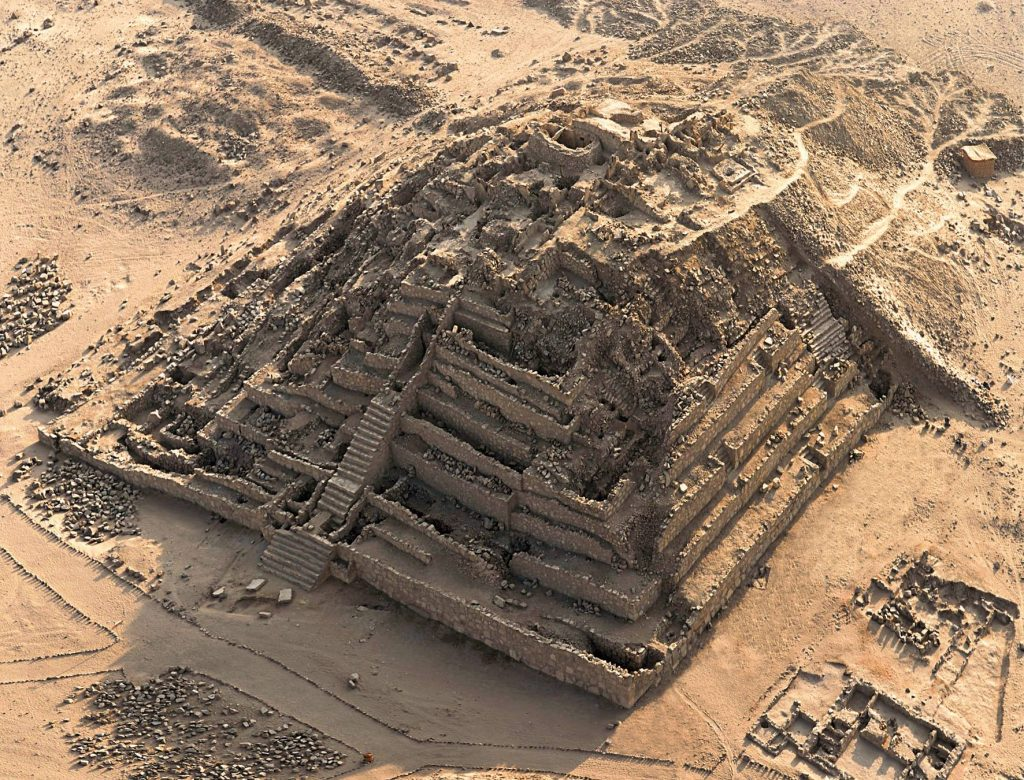
Caral pyramid

Caral, located in the Supe Valley of Peru, is the site of the oldest known civilization in the Americas, dating back over 5,000 years. Recognized as a UNESCO World Heritage Site, Caral is best known for its impressive pyramid-shaped structures, which form part of a large, complex urban center that flourished around the same time as ancient Egypt and Mesopotamia. The Great Pyramid of Caral, rising over 28 meters (about 92 feet), is the most prominent feature of the site and served ceremonial and administrative functions. The city also includes sunken circular plazas, residential zones, and evidence of sophisticated planning, including irrigation systems and amphitheaters for public gatherings.
What makes Caral particularly remarkable is the absence of warfare-related artifacts, suggesting that its society was built on commerce, agriculture, and religious leadership rather than conquest. Archaeological finds include musical instruments, quipu (an ancient recording device), and remains of cotton and trade goods, revealing the city's economic and cultural complexity. As one of the earliest examples of urban planning in the Americas, Caral is a crucial site for understanding the origins of Andean civilization and demonstrates that complex societies in South America developed independently from those in the Old World.
Logistics:
Caral is located in the Supe Valley, approximately 200 kilometers (125 miles) north of Lima, Peru. It is most commonly accessed by car or tour bus rather than on foot. The journey from Lima to the site takes about 4 to 5 hours by vehicle via the Pan-American Highway and then a local road to the town of Caral. From the parking area, visitors walk a short trail of approximately 1.5 kilometers (about 1 mile) to reach the main archaeological site. This short hike is flat and easy, suitable for visitors of all fitness levels, and takes around 20 to 30 minutes each way.


